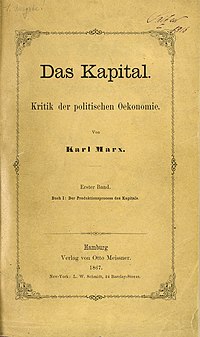
Photo from wikipedia
Ever increasing municipal solid waste (MSW) is becoming a serious city pollution trouble, extensive studies explored this question from micro demographic factors before. But testing the impact of spatial dependence… Click to show full abstract
Ever increasing municipal solid waste (MSW) is becoming a serious city pollution trouble, extensive studies explored this question from micro demographic factors before. But testing the impact of spatial dependence on MSW from macroeconomic factors with city-level panel data has not received adequate attention it deserves in prior literature, and routinely ignoring spatial dependence is prone to estimation biases. This research utilizes panel data of 285 Chinese cities for the period of 2006-2015 to explore the spatial dependence of the MSW. Employing two elaborate spatial panel models, the empirical result indicates that while road length, tertiary proportion, urbanization rate have significantly accelerated MSW generation, sanitation investment and education level are slightly negatively correlated with MSW generation, and GDP per capita has a mutual improvement relationship with MSW generation instead of inverted U-shape as predicted by Environmental Kuznets curve, which provides a new insight into city planning and environment protection when facing the fierce socio-environmental conflicts. Besides, there obviously exists spatial dependence and convergence phenomenon of MSW generation among China's cities.
Journal Title: Waste management
Year Published: 2019
Link to full text (if available)
Share on Social Media: Sign Up to like & get
recommendations!